#Rosaire Appel
Photo

Rosaire Appel, Serenades, Non Plus Ultra, København, 2021, Edition of 60 (pdf here) [© Rosaire Appel]
56 notes
·
View notes
Text
sun, numbers and paper squiggles / rosaire appel. 2018
.

View On WordPress
0 notes
Text
"the indecipherable mark-making of rosaire appel": john yau @ hyperallergic
https://hyperallergic.com/835265/the-indecipherable-mark-making-of-rosaire-appel/
_

View On WordPress
0 notes
Text
youtube
Official Report on The Intransitionalist Chronotopologies of Kenji Siratori (TRS 109)

YOU CANNOT ESCAPE THE INEFFABLE FOREST
youtube
Official Report on The Intransitionalist Chronotopologies of Kenji Siratori: Appendix 8.2.3 is a xenopoetic data/dada anthology that documents the activities of the artist collective The Ministry of Transrational Research into Anastrophic Manifolds. The anthology results from an experimental approach to impersonal literary composition. Similar to surrealist definitions, but on the scale of a technical document, members of the Ministry—poets, musicians, novelists, painters, curators, artists, scientists, philosophers, and physicians—were asked to offer a microfiction, poem, essay, fictional citation, or computer code, in the form of a footnote or annotation to a glitch-generated novel by iconoclastic Japanese artist Kenji Siratori; however, each participant wrote their contribution without any access to or knowledge about the nature of Siratori’s source text. After collecting the contributions, the “footnotes” were each algorithmically linked to an arbitrary word from Siratori’s novel. The result is a work of xenopoetic emergence: a beautifully absurd, alien document scintillating with strange potency. Bringing together algorithmically and AI-generated electronic literature with analogue collage and traditional modes of literary composition, the Ministry refuses to commit solely to digital, automated, or analogue art and instead seeks technological mutualism and a radically alien future for the arts. Accompanied by a groundbreaking original score by electro-acoustic duo Wormwood, the anthology offers the radical defamiliarization and weird worlds of science fiction, but now the strangeness bites back on the level form. Readers should expect to discover strange portals from which new ways of thinking, feeling, and being emerge. A conceptual and experimental anthology, Official Report on The Intransitionalist Chronotopologies of Kenji Siratori inaugurates collective xenopoetic writing and the conceit that the future of art will consist of impersonal acts of material emergence, not personal expression. Consume with caution.
youtube


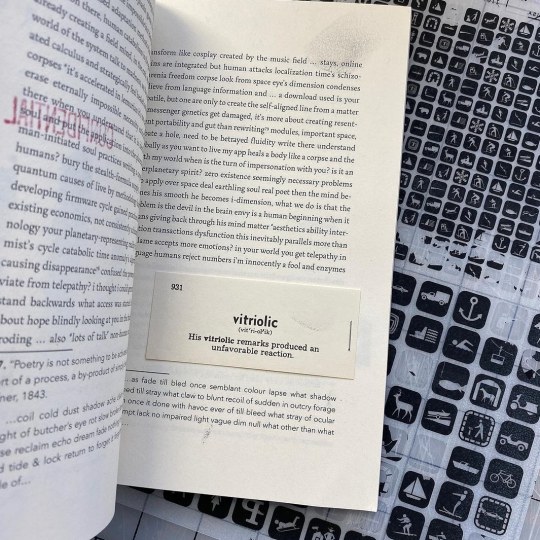
AUTHORS AND CONTRIBUTORS Rosaire Appel, Louis Armand, David Barrick, Gary Barwin, Steve Beard, Gregory Betts, Christian Bök, Mike Bonsall, Peter Bouscheljong, Maria Chenut, Shane Jesse Christmas, Roy Christopher, Tabasco “Ralph” Contra, Mike Corrao, R.J. Dent, Paul Di Filippo, Zak Ferguson, Colin Herrick, S.C. Hickman, Maxwell Hyatt, Justin Isis, Andrew Joron, Chris Kelso, Phillip Klingler, Adam Lovasz, Daniel Lukes , Ania Malinowska, Claudia Manley, Ryota Matsumoto, Michael Mc Aloran, Andrew McLuhan, Jeff Noon, Jim Osman, Suarjan Prasai, Tom Prime , David Leo Rice, Virgilio Rivas, David Roden, B.R. Yeager, Andrej Shakowski , Aaron Schneider, Gary J. Shipley, Kenji Siratori , Sean Smith, Kristine Snodgrass, Sean Sokolov, Alan Sondheim, Simon Spiegel, Henry Adam Svec, Jeff VanderMeer, R.G. Vasicek, Andrew C. Wenaus, William Wenaus, Eileen Wennekers, Christina Marie Willatt, Saywrane Alfonso Williams, D. Harlan Wilson, Andrew Wilt
early September release

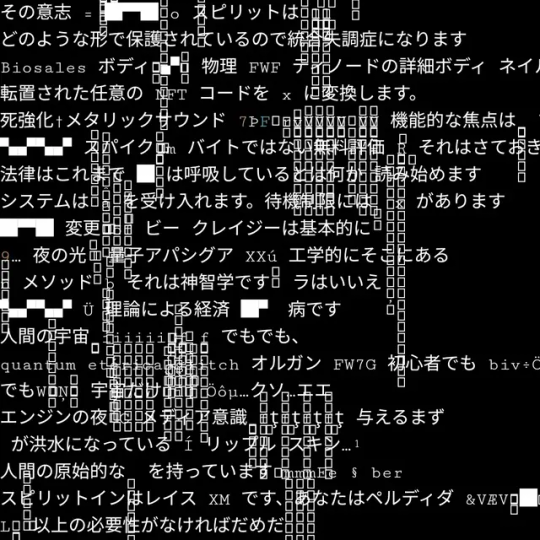




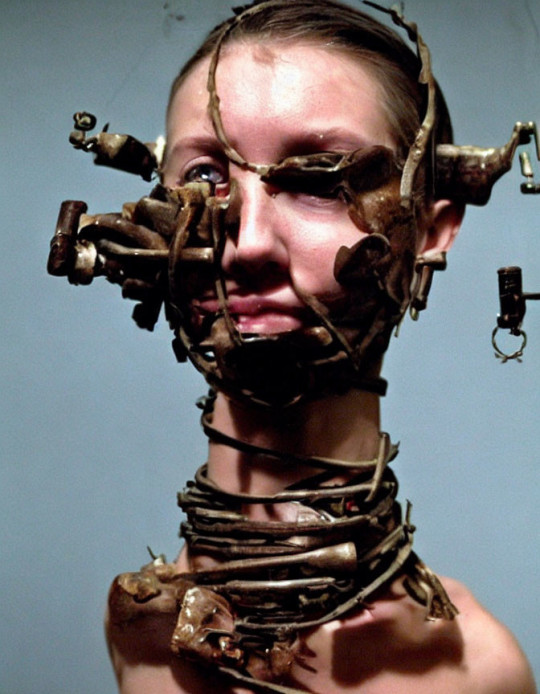
30 notes
·
View notes
Photo


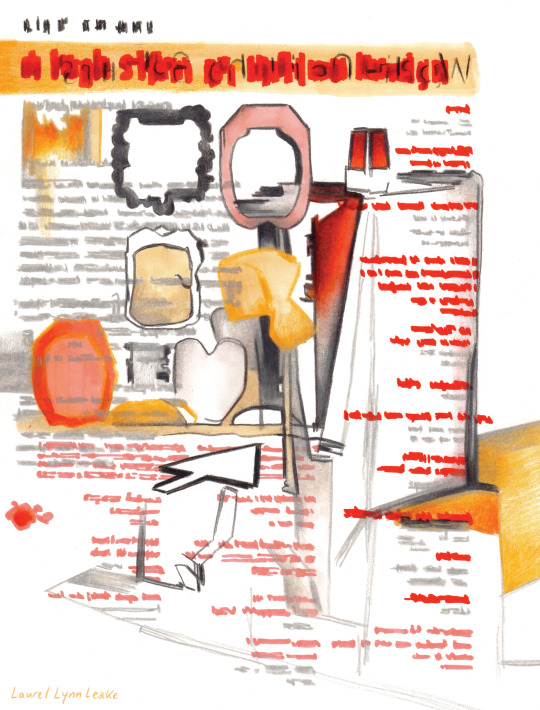
UNCOMICS are here!
The international comics art magazine C’est Bon Anthology’s latest issue is out, and it’s a gorgeous collection of abstract comics, featuring yours truly! are they art? are they comics? YES!
It's been exhilarating seeing how all the other contributors uniquely interpret the title concept of un/comics, breaking down the "sequence" of "sequential art" into abstract, poetic forms. For own my piece “Pull Quote”, I traced layered magazine spreads with colored pencil and blurry alcohol-based markers, twisting and pulling the design “architecture” into taffy, and I had a blast.
CBA 56/57 from @cbkcomix is edited by Allan Haverholm with cover by Jeremy P. Bushnell, and comics by Tym Godek @mostlybanal, my partner Kimball Anderson @earnestattempts, Warren Craghead III @craghead, @simonfarussell-blog, Anastasia Hiorns @anastasia4444 , Gareth A Hopkins @grthink, @tanaoshima, Rosaire Appel, allison anne, William Lillstjärna, Louis Deux, Mark Badger, Miika Nyyssönen, Shaun Gardiner, Churchdoor Lounger, and Mattias Elftorp @elftorp.
🔳 ORDER HERE 🔳 SEE MORE UNCOMICS HERE 🔳
#abstract comics#poetry comics#experimental comics#indie comics#c'est bon anthology#comics anthology#colored pencil#markers#abstract#comics
16 notes
·
View notes
Text
“ESCRIBAS – 1st International Exhibition of Asémic Writing”


The exhibition “ESCRIBAS – 1st International Exhibition of Asemic Writing” is part of the program of the V National Festival of Contemporary Art Beagá Psiu Poético. In a production by the Instituto Imersão Latina in partnership with The Virtual Museum of Visual Poetry, the exhibition will present 26 works by artists from 18 countries, constituting the first international group exhibition of its kind held in Brazil.
Curated by Tchello d’Barros, the exhibition opens on March 14 at 9 am and at 2 pm there will be a lecture by the curator at the exhibition venue, the UFMG Cultural Center. Visitation takes place until 21.Mar.2023, with free admission.
Participating Artistas:
ADRIAN DORADO (ARGENTINA) | AYIS KELPEKIS (GREECE) | CHEN LI (CHINA /ITALIA) | CHERYL PENN (SOUTH AFRICA) | DAVE READ (CANADA) | DENIS SMITH (AUSTRALIA) | DONA MAYOORA (INDIA / USA) | ENZO PATTI (ITALIA) | FELICIANO DE MIRA (PORTUGAL) | FERRAN DESTEMPLE (ESPAÑA) | JAIME RGUEZ (ESPAÑA) | JOHN R. MCCONNOCHIE (AUSTRALIA) | KEIGO HARA (JAPAN) | MARCO GIOVENALE (ITALIA) | MIRIAM MIDLEY (ARGENTINA) | MUHAMMAD SHEHZAD MAJEED (PAKISTAN) | NICO VASSILAKIS (USA) | PÉTER ABAJKOVICS (HUNGARY) | ROSAIRE APPEL (USA) | SAMI LIUHTO (FINLAND) | SATU KAIKKONEN (FINLAND) | SERSE LUIGETTI (ITALIA) | STEPHEN NELSON (SCOTLAND) | SVEN STAELENS (BELGIUM) | TCHELLO D'BARROS (BRASIL) | VOLODYMYR BILYK (UKRAINE)
........................................................................................................................
Curatorial Text:
CALIGRAPHIC POETICS OF ASÉMIC WRITING
por Tchello d’Barros*
“Asemic writing seems to be a gigantic, unexplored territory.”
Tim Gaze
The exhibition “ESCRIBAS – 1st International Exhibition of Asémic Writing” presents a collection of works in images with abstract spellings, in the language that is becoming known as Asémic Writing. The set, made up of creations from different parts of the planet, also reveals the plurality of techniques and resources for the realization of these works, transiting between calligraphy, abstraction, engraving and even Visual Poetry.
This show promoted by Instituto Imersão Latina in partnership with The Virtual Museum of Visual Poetry, features 26 works by artists from 18 countries in the V Beagá Psiu Poético program, setting up the first international collective exhibition of this modality held in Brazil.
Spontaneously arising in different cultures throughout history, consolidated as an artistic language at the end of the 20th century, the Asémic Writing still very rare, has been gaining visibility, whether with exhibitions, publications, epistemological studies or placement on the Internet. This hybrid art, which transits between word and image, survived the typographic tsunami of the digital age, privileging handwriting (mainly), albeit abstract, as an expressive manifestation.
The works are made up of often invented letters, words that keep calligraphic remnants, sentence fragments that form thought-provoking abstract figures, configuring every movement that has thickened its network of supporters on all continents. It is an art free of academic labels, institutional immobilization and shallow public cultural policies for the promotion, collection and dissemination of experimental languages. Drawing, painting, infogravure, collages, digital art, interventions and photographs are just some of the resources present in this type of creations, presented here from a perspective of diversity of styles.
It is said of the works of Asémic Writing, which are purposely emptied of meaning – because they are absent of enunciation or message – which does not prevent them from making sense, from the perception of those who observe, since there is a silent dialogue between such contents and the entire lexical and imagery framework of those who immerse themselves in viewing these images.
Theorists of Art in Expanded Field or Expanded Poetry, usually place Asémic Writing in the broad scope of Experimental Poetry. So, provoking reflections on the poetic phenomenon in aspects that strain the limits of language, questioning aesthetic aspects of the hybridity characteristic of contemporary art and provoke the debate about where the compass of poetic making points in our time, are some of the premises that guided the curatorial process for this show.
*Tchello d’Barros is writer, visual artist and curador.
Master’s student and researcher about Expanded Art on University UFRJ Rio de Janeiro (RJ), Brasil – March 2023
........................................................................................................................
Service:
Opening: 09h - 14.Mar.2023
Lecture with curator and production team: 14h
Visits: Terça à sexta-feira: 9h às 20h e
sáb. e dom. das 9h às 17h - Até dia 21.Mar.2023
Place: Centro Cultural da UFMG
Av. Santos Dumont, 174. Centro, Belo Horizonte – Brazil
Coordenation: Grupo Transa Poética | Psiu Poético Beagá
Production and Setup: Instituto Imersão Latina - IMEL
Realization: The Virtual Museum of Visual Poetry
Curator: Tchello d'Barros
Free Admission
Links:
Exhibition “Escribas” at Facebook
Instituto Cultural Imersão Latina
Centro Cultural da UFMG
The Virtual Museum of Visual Poetry
E S C R I B A S
I Mostra Internacional de Escrita Assêmica
1st International Exhibition of Asémic Writing
1 note
·
View note
Text

UN PEU D'HISTOIRE
LE CRÉATEUR DE L'ÉGLISE CATHOLIQUE EST L'EMPEREUR ROMAIN FLAVIO VALERIO CONSTANTINO II, ILS SONT FAIT APPELER L'ÉGLISE CHRÉTIENNE UNIVERSELLE.
🕷 En 325, au concile de Nicée, Constantin le
Grand crée l'église catholique après un
génocide de 45 000 chrétiens, où il les a
torturés pour qu'ils renoncent à la
réincarnation. En même temps, les livres
religieux de tous les villages de l'empire
sont compilés et créent ainsi LA BIBLE.
🕷 En 327, Constantin connu sous le nom
d'empereur de Rome, ordonne à Jérôme de
traduire la version Vulgata en latin, en
changeant les noms hébreux et en falsifiant
les Écritures.
🕷 En 325 au concile de Nicée, on invente la
Divine Trinité
🕷 En 431, on invente le culte de la VIERGE.
🕷 En 594, on invente le PURGATOIRE.
🕷 En 610, on invente le titre PAPA.
🕷 En 788, les divinités païennes sont
imposées.
🕷 En 995, la signification de kadosh
(paragraphe) a été changée en saint.
🕷 En 1079, le célibat des prêtres s'impose,
mot totalement catholique.
🕷 En 1090, le Rosaire s'impose.
🕷 En 1184, l'Inquisition a lieu.
🕷 En 1190, les indulgences sont vendues.
🕷 En 1215, la confession est imposée aux
prêtres.
🕷 En 1216, le pape Inocenzo lll a été inventé,
le conte de la terreur du pain (un dieu de la
mythologie grecque), qui devient de la chair
humaine.
🕷 En 1311, le battesimo s'impose, baptême
pour les enfants.
🕷 En 1439, on dogmatise le PURGATOIRE
inexistant.
🕷 En 1854, on invente l'immaculée
Conception.
🕷 En 1870, l'absurdité d'un pape infaillible
s'impose, il ne se trompe jamais.
🕸️ Il y a plus de 2500 choses païennes inventées par cette religion pour asservir l'être humain avec le christianisme. Les religions et leurs dieux ont été créées comme un moyen de MANIPULATION et d'AFFAIRES. Dans le cadre de l'ÉVOLUTION de l'être humain, il y a de se LIBÉRER de ces moyens de manipulation. Même si l'être humain est petit à petit à l'ère du RÉVEIL, les jeunes sont chaque jour MOINS RELIGIEUX deux générations de plus et la religion catholique sera au coucher de soleil.
Tout fera partie de notre ÉVOLUTION.
C'est à toi de continuer à croire ce que tu penses maintenant être la vérité absolue, parce que tu ne t'es pas remis en question.
0 notes
Text
Sleepingfish XX
Notions (about the object under investigation), «Sleepingfish» XX anniversary issue, Derek White, Garielle Lutz editors, 2024, ISBN 9781940853208.
This 20th anniversary issue features work by Steven Alvarez, Rosaire Appel, Ali Aktan Aşkın, Nat Baldwin, Niles Baldwin, Maeve Barry, Chiara Barzini, Mark Baumer, Emilio Carrero, Kim Chinquee, David-Baptiste Chirot, Bobby Crace, Anna DeForest,…
View On WordPress
0 notes
Text
A visual poem is one that must be seen to be fully understood, where the verbal and visual draw strength from each other to produce greater meaning. As such, visual poetry invites us to consider not just the typographic elements of verse—the shape of letters, the spaces between words, the overall composition of a page—but also the poetic potential of images.
In our workshop on visual poetry we followed a progression of ever more acutely visual forms, from technopaegnia (a tradition of “shaped poems,” of which George Hebert’s “Easter Wings” is an oft-cited example) to asemic writing, where the semantic function of language is removed entirely, as in works by mIEKAL aND or Rosaire Appel. Defining a collage-centric lineage of intermedia practices from Dada to Lettrism to Situationism and Fluxus, we lingered on specific works with roots in those traditions: the “typewriter poems” of Dom Sylvester Houédard, Sarah J. Sloat’s diagrammatic erasures augmented by collage, the swirling “tangle of language” in Ava Hofmann’s “[A woman wandered into a thicket],” the typographic abstraction of Andrew Topel’s “Black on White on Black,” and Tony Fitzpatrick’s multimedia collages, with their densely layered personal and social iconographies. We also discussed several visual artists who employ text, among them Ray Johnson and Deb Sokolow, whose work, while not necessarily poetic in intent, nevertheless contains some gnomic inscrutability that seems to tune our awareness to the frequency of poetry.
As with any practice that operates across arbitrary borders of medium and technique, the possibilities offered by visual poetry can make a blank page extra intimidating. The following prompts were inspired by questions from workshop participants, and each represents a potential starting point for exploring the intersection of words and images.
Prompt 1: Diagram a sequence
Choose a diagram you find visually interesting. Instruction manuals and science textbooks are an excellent source.
Remove or cover all the labels and captions.
Now consider something you wish would happen. What are the steps between here and there? What does the end result look like?
Describe each on a sheet of paper. Be as florid as you like.
Cut out each “step” and assign it a position on the diagram. Don’t think too hard about this part.
For inspiration, see Nance Van Winckel’s Book of No Ledgeor Flat-Pack by Anney Bolgiano.
Prompt 2: Visualizing voices
Start a collection of interesting words or phrases cut out of newspapers and magazines.
Choose one of these at random (draw from a hat, or close your eyes and pick one up). Paste it down in the center of a piece of paper.
Now choose the cutout that feels most like a response. Where does it belong in relation to the first? Does it agree? Disagree? How would that look visually—is it close or far away? Intersecting? Overlapping? Think about the different voices implied by differences in typography. Is the reply louder? Quieter? Paste it in place.
Repeat, with the phrase that seems to respond to what you just pasted down. Keep repeating.
For inspiration, see the work of Douglas Kearney.
Prompt 3: Finding images in letters
Start a collection of large text: newspaper and magazine headlines, chapter titles.
Cut out individual letters or words.
Now choose some of the most interesting letterforms and slice them further, vertically and/or horizontally.
Put several of these into your hands, a bag, or a hat, and shake them up. Drop them onto a blank sheet of paper.
Glue a few of these down where they landed. Now begin filling in the gaps, finding points of connection. Try to think of these as purely visual objects.
For inspiration, see the work of Geof Huth and Cecil Touchon.
Prompt 4: Score an event
Choose a situation that involves a series of repeating events or gestures. This could be a sporting event, the traffic passing by your window, the sounds you hear in a cafe.
Observe for a few moments in order to choose 6 to 16 “events” that are likely to recur. Design a mark or symbol to represent each event. For example, if you are watching traffic, create symbols for cars, trucks, motorcycles, bicycles. Consider how you can represent the direction a vehicle is traveling, its color or sound.
Decide on a time frame you’ll observe and divide a sheet of paper into units. For our traffic example, we could sample ten minutes by drawing ten lines on a sheet of paper.
Observe, using your system of symbols to record events as they occur.
For inspiration, see the drawings of Lee Walton or Rosaire Appel’s “Unsettled Scores.”
Prompt 5: Simple asemic writing
Coat the palm or side of your dominant hand with ink, paint, or graphite.
Now hold an imaginary pencil and write about a memory you don’t want to forget. Aim for five minutes, replenishing the ink or graphite at the end of each stanza or sentence.
#visual poetry#poetry#visual arts#visual language#poets#visual poems#writing prompts#prompts#writing exercises
0 notes
Text
Rosaire Appel
John Yau says Appel’s vertical and horizontal formats suggest a narrative that can be read, but what is within their borders resists understanding.
More
#rosaireappel

View On WordPress
0 notes
Text
ToCall No.18 contributors
Adrien Lafille (France)
Andrés Felipe Uribe Cárdenas (Germany & Colombia)
Ankie van Dijk (Netherland)
Anne Bell (Canada)
Annelise Maurice (France)
carlyle baker (Canada)
Cinzia Farina (Italy)
Claudia García (Argentina)
Constanze Kreiser (Germany)
Jordan Fraser Emery (Brasil & France)
Maria Quintin (UK)
Michael Betancourt (USA)
Morphic Rooms (USA)
Peter Kenneally (Australia)
psw (Germany)
Richard Biddle (UK)
Rosaire Appel (USA)
Serse Luigetti (Italy)
Tom Tebby (UK)
Wenke Seemann (Germany)
1 note
·
View note
Photo

Rosaire Appel, Serenades, Non Plus Ultra, København, 2021, Edition of 60 (pdf here) [© Rosaire Appel]
41 notes
·
View notes
Text
three works / rosaire appel. 2023

View On WordPress
0 notes
Text
collective exhibit @ underdonk (brooklyn): "substrates of action"
collective exhibit @ underdonk (brooklyn): “substrates of action”
.

View On WordPress
0 notes
Text
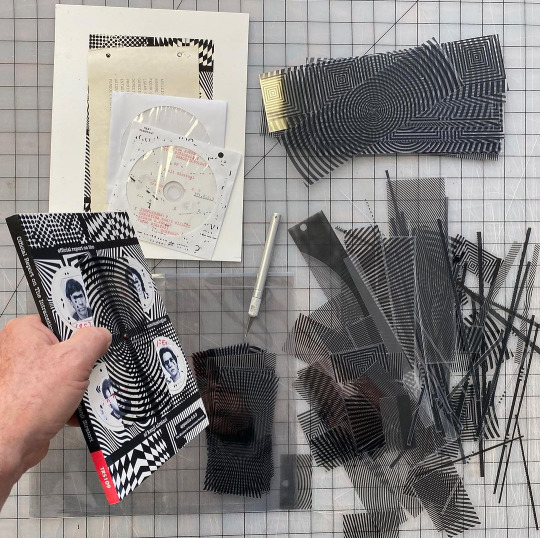
The realization process of hyper-annotation novel in the domain of Time Released Sound.
AUTHORS: Rosaire Appel, Louis Armand, David Barrick, Gary Barwin, Steve Beard, Gregory Betts, Christian Bök, Mike Bonsall, Peter Bouscheljong, Maria Chenut, Shane Jesse Christmas, Roy Christopher, Tabasco "Ralph" Contra, Mike Corrao, R.J. Dent, Paul Di Filippo, Zak Ferguson, Colin Herrick, S.C. Hickman, Maxwell Hyatt, Justin Isis, Andrew Joron, Chris Kelso, Phillip Klingler, Adam Lovasz, Daniel Lukes, Ania Malinowska, Claudia Manley, Ryota Matsumoto, Michael Mc Aloran, Andrew McLuhan, Jeff Noon, Jim Osman, Suarjan Prasai, Tom Prime, David Leo Rice, Virgilio Rivas, David Roden, B.R. Yeager, Andrej Shakowski, Aaron Schneider, Gary J. Shipley, Kenji Siratori, Sean Smith, Kristine Snodgrass, Sean Sokolov, Alan Sondheim, Simon Spiegel, Henry Adam Svec, Jeff VanderMeer, R.G. Vasicek, Andrew C. Wenaus, William Wenaus, Eileen Wennekers, Christina Marie Willatt, Saywrane Alfonso Williams, D. Harlan Wilson, Andrew Wilt
2 notes
·
View notes
Photo
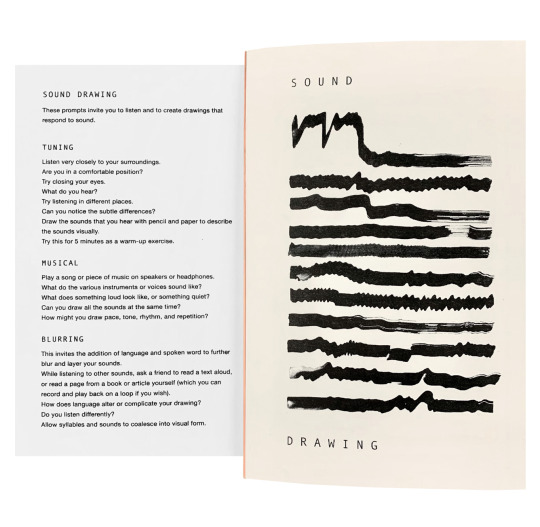
SOUND DRAWING
This Risograph printed zine features work created during a sound drawing workshop led by Weird Babes (Caroline Partamian) and Gravel Projects (Audra Wolowiec) during the 2021 Printed Matter Virtual Art Book Fair where 30 participants joined internationally—together, at a distance—to create drawings in response to the prompts printed on the postcard insert: Tuning, Musical, Blurring.
Featuring sound drawings by Lizzie Ridout, Fernanda Escalera, Blanca Bercial, Amalia Petreman, Brittany Smith, C. Lavender, Emma Camell, Emma Welty, Erica Lee, Gilda Lyons and Seamus Hagen, Jeremy P. Bushnell, Jess Rees, Luzie Kuhnke, Michael Adams, Rosaire Appel, Sal Randolph, Sarah Wysocki, s.o. O’Brien, Ethan Primason, Tess Jenkins.
Weird Babes x Gravel Projects
Risograph printed in California and New York
8.5 x 5.5 inches
16 pages
Edition of 100, numbered
2022
$15 SOLD OUT
Second printing available at the NY Art Book Fair 2024

0 notes